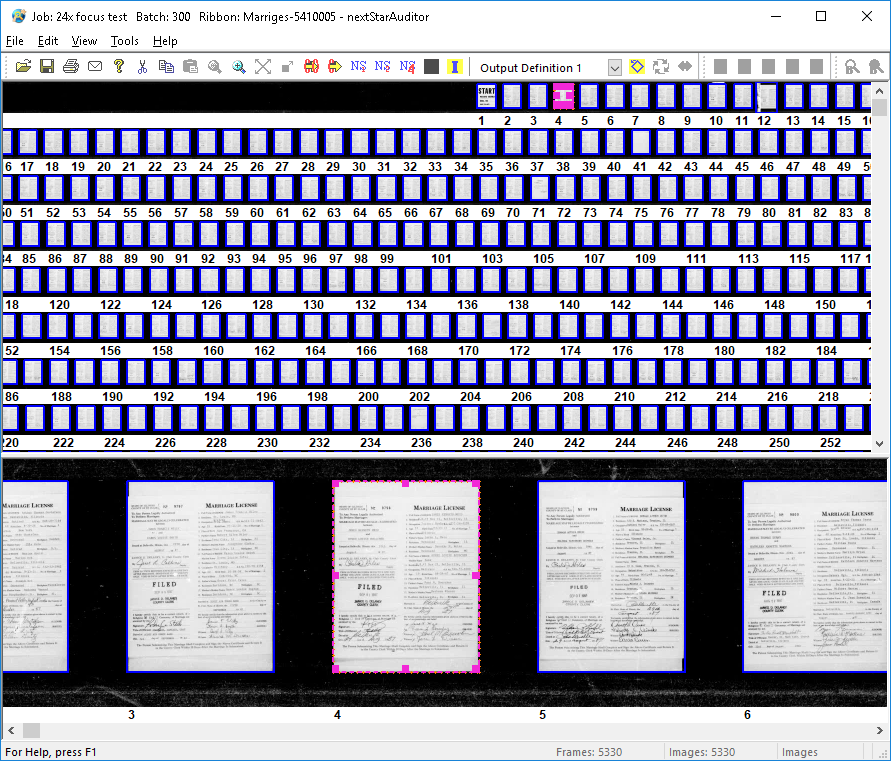By Matt Anderson, Vice President of Marketing, nextScan
The ability to scan quickly is a key feature of any conversion project, but only if you can scan accurately and ensure that every document has been captured digitally. Making sure that your conversion project has a stage dedicated to Quality Control or Auditing is just as critical as scanning speeds and image quality.
Capture in the RAW
The first step to being able to review all of the scans is to capture them as a RAW image file. A RAW image file is one that contains exactly what the data collected without any loss from compression, interpolation, scaling or other interference. This RAW data is key to a fast auditing process because it is one image file instead of multiple image files. It is with this RAW data that we can view the entire roll as a Ribbon and detect what we have captured.
The QC Process
The Quality Control, or Auditing process is critical. Without being able to quickly determine what had been captured a worker would have to painfully sort through each individual image, adjusting each one and outputting the results. Auditing software displays the entire RAW data file as one image, detecting individual frames based on predefined parameters. The RAW file is key when needing to make adjustments to the entire roll. For example, an entire roll may have been wound backwards and each image requires a mirror adjustment. Going through each image individually to perform that function would take a long time. With an auditing tool a user can make one adjustment and reflect that across the entire ribbon of RAW data. Similarly, if the original roll was filmed either over or under exposed. A quick adjustment will make those changes instantly to every frame.
Did You Capture It All?
Before the final step of outputting the images, one last question needs to be asked. Was everything on the roll captured? An Auditor allows a user to see the entire roll of film or microfiche as a ribbon, including data in between frames. Using the Detect Process, the Auditor will locate the individual frames on that RAW ribbon file and draw a box around each one. Any gaps in the film would be easily detected and inspected further by the user. Now we can be sure that every piece of data on the roll of film was transferred to the ribbon which was then digitally spliced into frames.

Output
The RAW ribbon file, with adjustments made and frames detected, needs one final process – output. Normally run in the background, the output feature converts a fully audited RAW ribbon file into individual image file formats (TIFF, JPEG, etc.). Now an individual digital file has been created for each frame on the roll of microfilm. Additionally, with the required software, word-searchable PDFs can be created at this time. These files can then be transferred to a secure server for storage and future retrieval.
Over the past year, in the NIRMA newsletter, we have discussed the many challenges to confidently convert your microfilm and microfiche to a digital archive. Remember, for a true digital conversion of your microfilm collection make sure to use a line scan scanner to capture all data on the roll of fiche, understand the limitations of certain media – specifically microfiche, and to have a process ensuring a true digital replica of the data has been completed. The information that record managers control is vital to your facility. During the conversion process can you afford to miss a single image? Don’t leave your conversion to chance, Convert Confidently!
